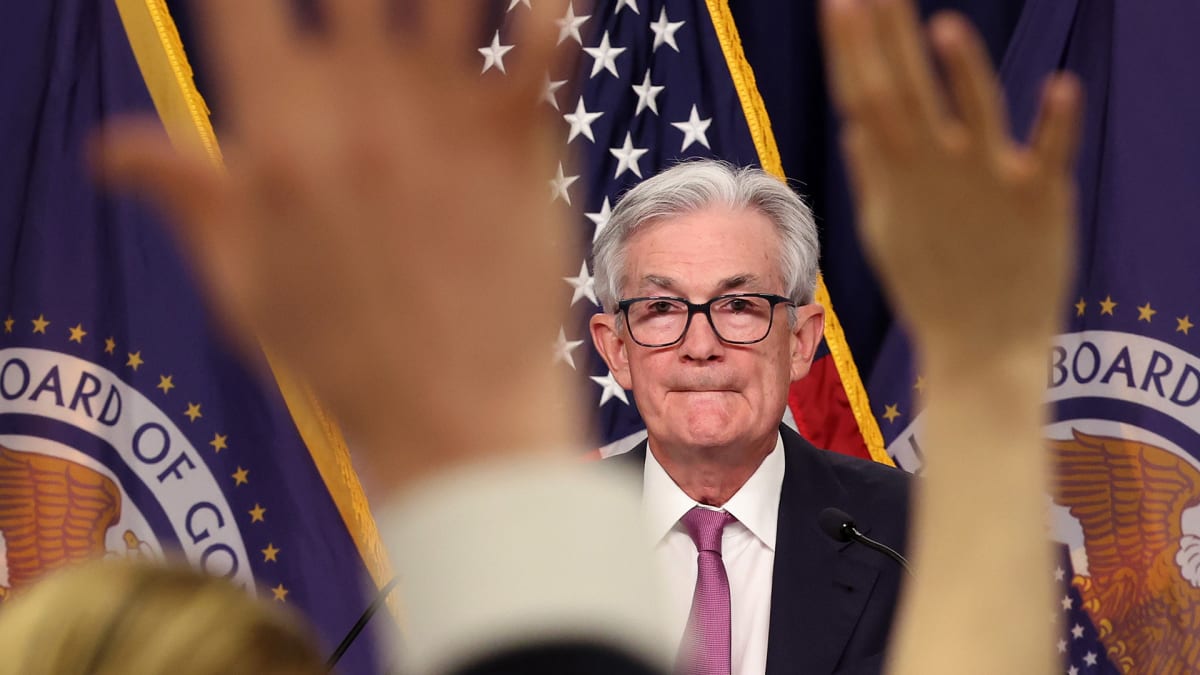
The weekend rescue of SVB Financial (SIVB) depositors, and the Treasury's decision to excluded bond and equity investors from the billions in lending and funding support, has markets betting that the Federal Reserve will not be able to raise interest rates later this month in Washington.
The CME Group's FedWatch now suggests a 55% chance that the central bank will hold its current Fed Funds rate in place at 4.5% to 4.75%, with around 45% willing to wager on a quarter point hike when the Fed wraps-up its two-day policy meeting on March 22.
Only last week, the chances of a Fed hold were marked at 0%, thanks in part to a surprisingly hawkish tone from Chairman Jerome Powell during his semi-annual testimony to both the Senate Banking Committee and the House Financial Services Committee. Bets on a 50 basis point rate hike were as high as 40%.
Investors are also dialing-back forecasts for Fed hikes into the spring, with the chances of a terminal Fed Funds rate that is north of its current rate falling to just 20.2% in June and 9% in July.
The collapse of SVB, however, triggered in part by losses on its portfolio of long-date Treasury bonds, has both raised concerns for the fate of other regional and sector-focused lenders sitting on billions of potential bond losses and the impact of stricter lending conditions on the broader economy.
"In light of recent stress in the banking system, we no longer expect the (Federal Open Market Committee) to deliver a rate hike at its March 22 meeting with considerable uncertainty about the path beyond March," said Goldman Sachs's chief economist, Jan Hatzius, in a weekend client note.
Benchmark 2-year note yields, meanwhile, which are tightly-linked to Fed rate projections, were marked 54 basis points lower in early Monday trading to change hands at 4.028%, marking the largest three-day decline since 1987.
The moves in both 2-year notes and CME Group futures put tomorrow's February CPI report in sharp focus, with a softer reading possibly providing cover for the Fed to introduce a slower policy path.
At present, economists expect the year-on-year headline reading to ease modestly, to around 6%, with the closely-tracked core inflation tally edging 0.1% lower to 5.5%.
The concerns linked to SVB Financial contagion are being mitigated by the launch of the Fed's new bank lending program, which offers unlimited funds -- if backed by high quality collateral -- to stressed U.S. lenders.
"While the Fed has historically cut interest rates following major negative financial events, such as a bank failure, efforts by regulators to bail out SVB depositors and provide loans to struggling banks will reduce systemic risk and enable the Fed to continue raising interest rates in an effort to keep fighting inflation," said Richard Saperstein, chief investment officer, at New York-based Treasury Partners.
"Going forward, we expect tighter bank lending standards, cautious investing on the part of private equity and venture capital funds and a further decline in economic activity as a result of this incident," he added.
However, if the Fed were to continue on its policy path, which calls for a Fed Funds rate that's north of 5.5%, banks would see deeper paper losses on their bond portfolios as a result.
And if those bonds were deposited at the Fed, in exchange for long-term loans, the Fed itself would face deeper losses on its holdings as its own rates rise.
Another impact, which could affect the broader U.S. economy, is that thousands of smaller tech start-ups, as well as some medium-sized companies, will find themselves choked-off of funding sources following the SVB Financial implosion, leaving them will little choice but to downsize staff in order to lower costs.
That will have a knock-on impact to weekly jobless claims, and ultimately non-farm payroll figures, as the tech sector retrenching intensifies.
Last week, Challenger, Gray & Christmas reported 77,770 February job losses in its closely-tracked tally of U.S. corporate layoffs, the highest since 2009.
The Challenger report in fact noted that U.S. companies, most of them in the tech space, have unveiled nearly 181,000 new job cuts so far this year, more than four times the total over the same period in 2022, as the Fed amped-up its hawkish rate rhetoric.
"The shock in the tech sector will be profound, and cashflow problems among the bank’s former customers—whose deposits are now frozen—will trigger layoffs.," said Ian Shepherdson of Pantheon Macroeconomics. "But we doubt that the SVB collapse will be followed by a wave of failures at large institutions; their balance sheets are fundamentally different."







